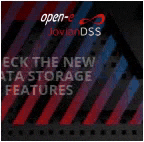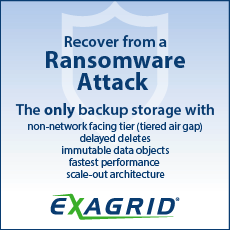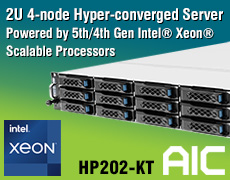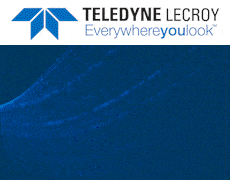NAS Solutions Extend Their Reach Deeper Into Organizations
Remaining the go-to storage solution for many organizations
This is a Press Release edited by StorageNewsletter.com on April 1, 2025 at 2:03 pm Published on March 27, 2025, this report was written by Jerome M. Wendt, CEO and principal analyst, DCIG (Data Center Intelligence Group LLC).
Published on March 27, 2025, this report was written by Jerome M. Wendt, CEO and principal analyst, DCIG (Data Center Intelligence Group LLC).
Network-attached storage (NAS) solutions have become notable if, for no other reason, in how organizations utilize them in multiple roles. Organizations may view using them in one, 2 or even 3 different roles in their IT environments. However, as DCIG uncovered in its recent research into NAS solutions, they have extended their reach almost everywhere within organizations.
Forecast Use and Growth of NAS
Many recent analysts’ and research reports indicate that organizations will continue to expand their use of NAS solutions. For instance, Fortune Business Insights anticipates the global NAS market will nearly triple in value over the next 7 years. Valuing it at $40.3 billion in 2024, Forbes forecasts the NAS market could grow to nearly $130 billion by 2032 (1)
While that estimate represents the high end of the forecasts reviewed by DCIG, no one expects NAS usage to decline. With more than 80% of organizations already using NAS, NAS’s future seems secure for now.(2) Further, organizations continue to find new roles for NAS solutions to fill that further contributes to them extending their reach into them. Here are some of the popular ones that DCIG has uncovered.
Enterprise File Services
Providing file services to users remains its primary use case and perhaps the primary context in which organizations view NAS solutions. Supporting both the network file service (NFS) and server message block (SMB) file networking protocols, they can centrally service Linux and Windows users alike.
Further, both file networking protocols and NAS solutions have made improvements to address growing capacity and security concerns. On the file networking protocol side, both NFS and SMB offer options to ensure end-to-end encryption of files in transit to prevent man-in-the-middle attacks.
NFS can do so if one uses Kerberos authentication on shared folders, to ensure packet integrity, or to encrypt NFS packets sent during data transfer. SMB versions 3.0, 3.02, and 3.1.1 all support encryption and are enabled by file share or server.
NAS solutions themselves offer multiple features to secure data and facilitate storing large amounts of data. To secure data, they often support one or more of the following features: encryption of data at-rest, multi-factor authentication (MFA), and WORM technology.
To facilitate storing large amounts of data (10s or 100s of petabytes), many internally support high-capacity HDDs or SSDs. Further, many support connectors to external object storage (on-premises or in the cloud) to facilitate storing large amounts of data.
Production Applications
Running performance production applications on NAS solutions was once viewed as problematic at best and taboo at worst. This mindsight has evolved in recent years as both applications and NAS solutions have matured to facilitate this architecture.
The introduction of flash drives into NAS solutions represents perhaps the biggest reason organizations can host performing applications on them. Using flash-based SSDs in NAS solutions has dramatically reduced application read and write times.
File networking protocols do incur more overhead and latency than block storage protocols. However, the faster data access times enabled by using SSDs overcome these drawbacks of file networking protocols.
Hosting Hypervisors
Using NAS solutions as backend storage for server virtualization represents one common use case for production workloads. While hosting vSphere on NAS solutions represents a common deployment, other hypervisors also support NAS for their backend storage. These include Microsoft Windows Hyper-V and Linux KVM implementations such as from Red Hat Enterprise Linux. Further, organizations may potentially use the same NAS solution to host multiple hypervisors.
Backup Target
Deploying NAS solutions as a backup target also serves as another common use case for NAS solutions. Using NAS solutions as a backup target makes sense on at least 2 fronts.
First, most if not all backup solutions recognize and support file shares on NAS solutions as a backup target. This makes it relatively fast and easy to deploy and set up as well as add more storage capacity when and if needed.
Second, should organizations need to restore files or perform a recovery, they can potentially bypass the backup software and access the NAS solution directly. They can navigate directly to the folder hosting the backups and restore the file or files. They may even use the NAS solution as backend storage to recover a VM. While it may not perform as well as production storage (though it might,) organizations can quickly perform a recovery.
NAS Solutions Have Reach into Organizations for a Reason
The 4 use cases for NAS solutions listed here only scratch the surface of how organizations deploy and use them. Video surveillance solutions use them to host data. Edge and remote sites use them for their own file services, content distribution, and for any of the use cases already mentioned.
These reasons help explain why NAS solutions continue to maintain and even expand their reach deeper into organizations. NAS solutions, in general, probably epitomize ‘good enough’ storage for many organizational workloads. While DCIG still foresees continued growth for block and object storage, NAS solutions remain a go-to storage solution for many organizational requirements.
(1) Network Attached Storage Market Size, Share & Industry Analysis, By Enterprise Type, published March 10, 2025. Referenced 3/25/2025.
(2) NAS Market Size & Share Analysis – Growth Trends & Forecasts (2025 – 2030) . Referenced 3/25/2025.













 Subscribe to our free daily newsletter
Subscribe to our free daily newsletter


